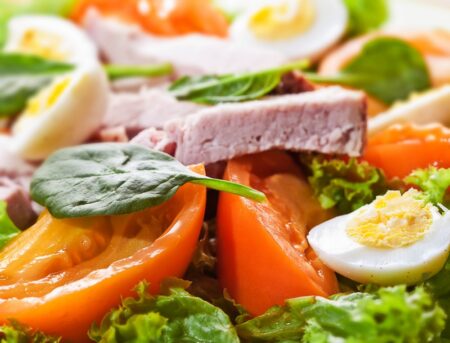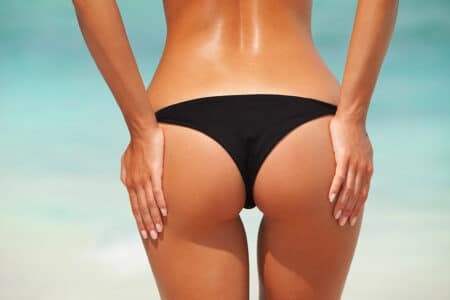Fat freezing: Everything you need to know
August 2021 | Reading time: 5 minutes

Table of Contents
We discuss how fat freezing works, the myths associated with it, and why the treatment has become so popular in such a short time.
Fat freezing, referred to as cryolipolysis in medical circles, is one of the most popular fat removal treatments in the market these days. Part of its popularity can be credited to the fact that the procedure is non-surgical. There are no knives or needles involved nor even the need for recovery time afterwards, yet the results are as effective as that of the surgical methods, if not more so. Of course, the prevalence of fat freezing would catch on.
However, we do live in the age of the internet, where words travel swiftly. Everything that gains traction fast is sure to be mired by all kinds of misconceptions – the good, the bad and the ugly.
Now is a good time, as any, to address some of the more common myths afloat the flow of information on the web-sphere. But to sift the real from the phoney, it is crucial that we understand what cryolipolysis is and what it does.

The ‘fat’ in fat freezing
The human body has two distinct kinds of fat: subcutaneous fat and visceral fat.
Visceral fat lines the abdominal organs and is linked to diseases of the heart and diabetes, among others. It is hard to detect; one can have the flattest of tummies and still have plenty of visceral fat.
Subcutaneous fat is the visible kind. It is found under the skin and associated with the tightening of clothes around the waist. As one grows older, their body’s ability to eliminate this kind of fat decreases. Fat freezing (and other fat removal methods) helps relieve the body of subcutaneous fat.
So, in relation to cryolipolysis, all the ‘fat’ in this article refers to subcutaneous fat.
The origins of cryolipolysis
The effects of fat freezing were discovered when observing children who were extra fond of popsicles. The children would eat lots of popsicles, and large areas of dimples would form on their cheeks.
The innovators of the fat freezing treatment were intrigued by this process which was referred to as ‘cold-induced fat necrosis’.
Samples taken from paediatric patients were indicative of fat inflammation occurring in the areas of the cheek where the popsicles had rested for a prolonged period. However, the overlying skin was unaffected. The natural conclusion was that fat was far more likely to be injured by cold than skin and other tissues.
Soon after the technology was developed to treat humans with stubborn patches of fat, the first cryolipolysis technology was approved for medical use on humans in 2010.
Fun fact: Cryolipolysis literally reads cold (cryo) fat (lipo) destruction (lysis).

How does fat freezing work?
A specific area of tenacious fat deposit is targetted with an applicator and exposed to temperatures between -7°C to -8°C. The whole procedure lasts around half an hour. During this time, the fat cells dismantle and get absorbed by the lymphatic system to be removed along with other toxins.
There is no need for recovery and thus no downtime after the procedure.

Myths about fat freezing
There is much information all over the internet regarding the procedure, but we chose to focus on some of the more widespread and harmful ones.
‘It’s painful.’
It is not. Fat freezing is completely non-invasive and performed using cool gel-pad applicators. You may feel slight discomfort – you will be in direct contact with a cold surface after all. But that is about it. Some patients have reported temporary redness and a little swelling afterwards but never pain.
‘Fat freezing aids in weight loss.’
Fat freezing is used to reduce fat. Fat reduction is not weight loss.
You lose weight when the size of your fat cells shrinks. This is usually brought about by a balanced intake of calories in relation to the amount burnt through exercise. End of the day, the number of fat cells remain unchanged. Muscle loss and fluid loss can also be causes of weight loss.
However, fat reduction procedures permanently remove the fat cells and causing a decrease in the number of the cells. There are fewer fat cells in the treated area and a reduction of about 1-2 pounds in overall weight if this area is a large one.
‘Fat freezing can only be performed on the stomach.’
Back when cryolipolysis was first approved by the FDA for commercial medical use, it could only be used to treat the abdomen area. However, the technology has come rather far since its inception. Many areas of the body can be effectively treated nowadays, including:
- Chin
- Arms
- Chest
- Thighs
- Buttocks
- Upper and lower back
Get in touch with VIVO Body Studio’s aesthetics team for a comprehensive list of all the areas that can be treated with cryolipolysis.
‘You’ll never gain back the weight after a cryolipolysis treatment.’
That is not correct. The results of a fat freezing treatment are entirely reliant on your general lifestyle. If you have a balanced diet and exercise regularly, you have a higher chance of not gaining back the weight. However, as mentioned before, fat freezing is not a weight loss solution. And it is not meant to be an alternative to a healthy lifestyle.
After a successful session or more, the fat cells of the treated area will have gone, and the results will be visible. However, the untreated fat cells may increase in volume resulting in weight gain after the treatment.

To book a consultation session, or for more information, do get in touch with a VIVO Body Studio rep using the button below.
Schedule a consultationRelated Articles

HIFU Facelift: Prep and aftercare
Understanding HIFU Facelift Treatment Although the initial application of HIFU was to treat of tumors The FDA approved the technique...
Skin Tightening Birmingham
At VIVO Body Studio in Birmingham, we have the latest Skin Tightening treatments! Our skin changes a lot with age....
The Cutting-Edge EMSCULPT Treatment: A Game-Changer in Body Sculpting
EMSCULPT Treatment: Non-Invasive Body Sculpting Solution In the world of body contouring, a game-changing treatment has emerged – EMSCULPT. This...
Skin Tightening London – Revolutionary RF Treatment
VIVO Body Studio London now offers Skin Tightening treatments for your face and body, leaving you with skin that looks...
New Fat Freezing Treatment Cardiff: 10 Things to Expect
Are you considering fat freezing in Cardiff to achieve your body contouring goals?
Unlock Your Natural Beauty: Exploring Non-Surgical Treatments
Embrace Your Radiance In today's fast-paced world, it's essential to prioritize self-care and embrace our natural beauty. While surgical procedures...
Hair Rejuvenation Birmingham
Our new and advanced Hair Rejuvenation treatment is now available at VIVO Body Studio in Birmingham! At VIVO Body Studio...
Laser Hair Removal Manchester
You can get VIVO Body Studio’s popular Laser Hair Removal treatment done at our Manchester branch. We use the innovative...
Surgical Brazilian Bum Lift: Is It Safe?
This week it was revealed that another person lost their life as a result of the Surgical Brazilian Bum Lift,...
FemiWand treatment: Everything you need to know
The results expectations and must-know info of VIVO Body Studio’s vaginal tightening treatment with the FemiWand technology. The FemiWand technology...
Plasma Eye Lift Birmingham
VIVO Body Studio Birmingham now offers the revolutionary Plasma Eye Lift procedure. Our Plasma Eye Lift in Birmingham uses revolutionary German...
Plasma Eye Lift London
Due to the popularity of the Plasma Eye Lift, this procedure is now available at VIVO Body Studio in London!...Happy Customers
2,207 Reviews and CountingMobina carried out this treatment and she is v knowledgable, professional and attentive throughout. I’ve got my next appointment booked & can’t wait to see the results after that session.
I would highly recommend this treatment and Mobina.
 close
close



